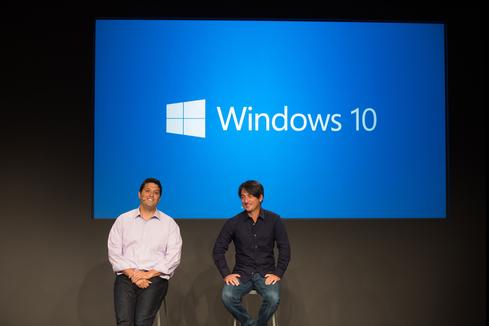Everyone should have the chance to create an ideal virtual world for collaboration. With HoloLens, we could someday connect with colleagues in a fantasy French café, or on a World of Warcraft battlefield.


Windows 10: 9 Killer Features
Windows 10: 9 Killer Features (Click image for larger view and slideshow.)
With the announcement of Microsoft’s Project HoloLens coming to developers this spring, many are focused on immersive, otherworldly gaming applications of virtual reality. But what if the real killer app could be found in something far more mundane, such as the lowly conference call?
In considering communication science, it is easy to believe that we are cresting a new apex when it comes to "presence" -- the act of fooling your mind into thinking that you're in a virtual reality world. Palmer Luckey and his innovations behind Oculus Rift (which Facebook acquired for $2 billion) are making presence a reality. Now, Microsoft has upped the ante, unveiling what promises to be another game-changer with HoloLens, a head-mounted holographic computer.
The magic behind Project HoloLens is that it promises to present your brain with realistic 3D holograms that feel like navigable space. The result is that it feels like you are there -- wherever "there" may be. What HoloLens intends that is profoundly different from Oculus Rift, at least under its current development kit, is that you can see your hands and body -- as well as others -- interacting in this world. You are freed from your chair to move around and interact with others.
To my fellow Trekkies, welcome to the Holodeck v.0001.
Back to non-virtual reality, it's time to ask some hard questions. Why does gaming always get all the best toys? Why does enterprise IT have to just suck it up and be satisfied with smartphones and "ooooh" telepresence rooms? Why can't virtual reality be unleashed to improve our ability to communicate?
[ Can HoloLens actually make working fun? Read Geekend: HoloLens Makes Microsoft Cool. ]
Now that returns us to the humble conference call. Today, one could aptly define a conference call as a cacophony of beeps punctuated by people apologizing for their tardiness, lost connections, and speaking while on mute. At best, conference calls are ineffective. At their worst, they are a step above soul-crushing.
It doesn't have to be that way.
So listen up, Microsoft. Forget about apps that help NASA visit Mars and make life better for a total of four astronauts. Instead, think of us, the poor minions stuck on conference calls day in and out. We need the HoloLens now.
Can HoloLens Make You Love Conference Calls?
Can't imagine it? Well, we at the Hypervoice Consortium have been thinking long and hard about what communications will look like in 2025. [Download a full report here.] Allow me to present a vision of the future conference call.
Although I am actually sitting at my desk in snowbound Milwaukee, I see through my virtual reality headset the fields of Provence -- lavender swaying to and fro in the mistral, birds alighting around me. I see my colleagues Fred, John, and Gina approach wearing their best 17th century French peasant attire. I wave them over to sit down. Our conference call has started.
France is my happy place. I see them here, but that's not how they see me.
For Fred, I am in his World of Warcraft Garrison. My attire? I’m totally a Night Elf Druid adorned with bark and leaves -- although I am clueless to this fact.
Gina is at a Parisian café, and sees us all sipping expensive espresso and people-watching.
John is fly-fishing. We're all wearing waders, standing knee-deep in an icy stream tying flies and casting (brilliantly, I might add) as we chat.
[Office for Android, Outlook upgrade, and more in Microsoft news.]
The point is that we are all working from virtual locations that best support our unique, highly individualized needs for optimal cognition. Some of us work better with limited noise and visual stimuli; others need the adrenal hit of a mission to snap into high gear.
In short, the burgeoning world of virtual reality promises us the ability to work within our most idealized context. Let's break out of the box of the fake plants and the conference tables pushed up against the wall. Instead of recreating the lowest common denominator for a telepresence call, why not flip the model and make it perfect for each of us?
And yes, some of us will continue to prefer the comfort of the good old telepresence room -- fake plant and all. To that I say: To each her own. I'm heading out to harvest some lavender.
How about you -- if you could create your perfect conference call virtual setting, what would it look like? Tell us about it in the comments section below.
Attend Interop Las Vegas, the leading independent technology conference and expo series designed to inspire, inform, and connect the world's IT community. It happens April 27 to May 1. Register with Discount Code MPOIWK for $200 off Total Access & Conference Passes.
About the Author(s)
You May Also Like







